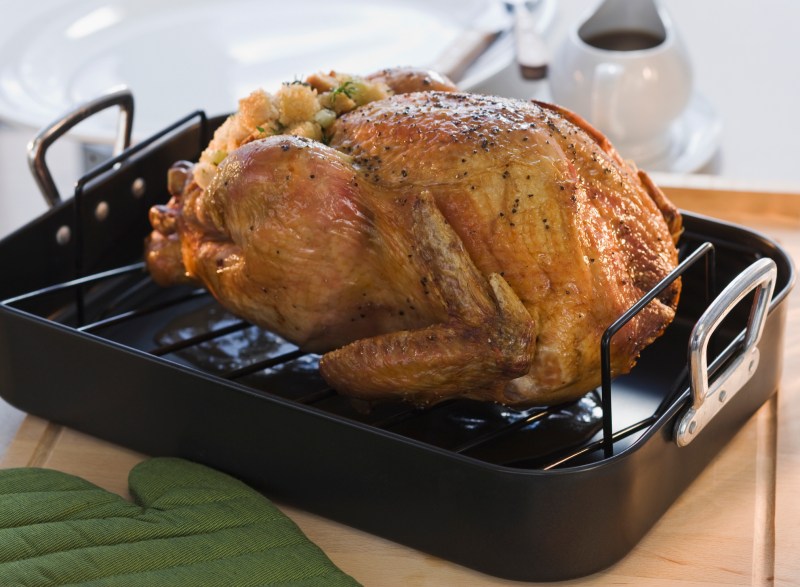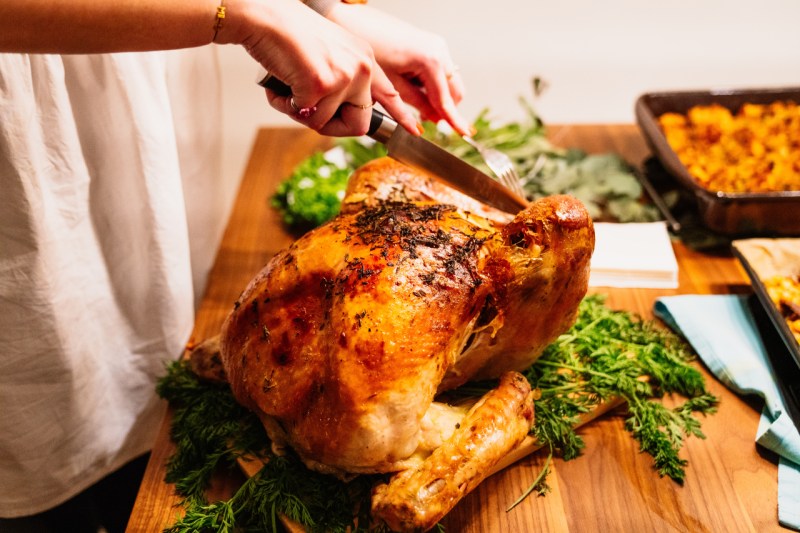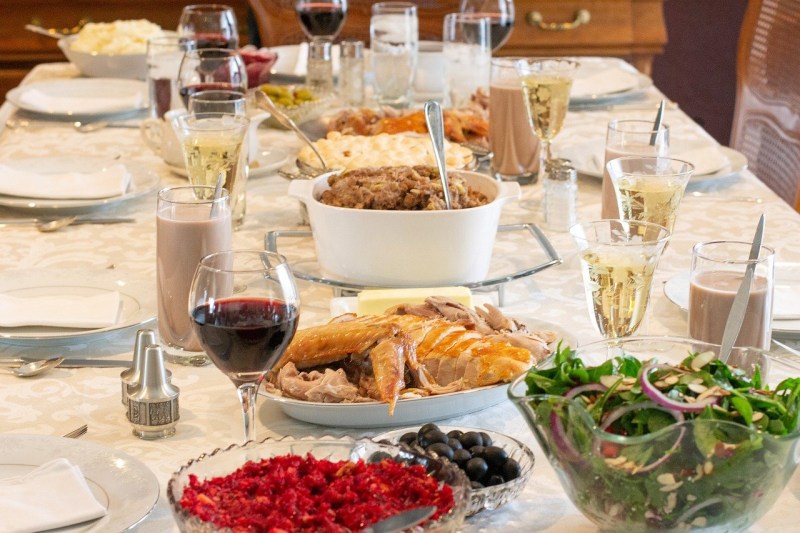It’s that time of year again. Temperatures are dropping, pumpkin-spice-everything is all around, and decorative gourds are hanging all over. And now, it’s time to start planning the big Thanksgiving dinner. Maybe, so far, you have lucked out and only needed to bring a side dish to this year’s gathering.
Or perhaps this year you stepped up and decided you’re going to cook the turkey for this year’s Thanksgiving feast — and that means knowing how to carve the turkey. And no matter the size of your bird, be it a small one for a small gathering or a whopping 20-pounder for a massive family dinner, carving the turkey can be intimidating. Thankfully, we asked a professional chef to show us how to carve a turkey.
Prep and cook the turkey

You’ll need to prep the turkey no matter how you slice it. How do you prep the turkey for cooking? Well, you could learn how to brine a turkey, smoke a turkey, or even deep fry a turkey, all of which are fine alternatives to traditional roast turkey.
Now, your bird is cooked. The table is set. It’s time to carve. So, where to start? Don’t worry! We have you covered. We asked award-winning Chef Timothy Hollingsworth, who was featured on Netflix’s The Final Table, to walk us through the turkey-carving process.
Prep your tools

Here are some items you’re going to need:
Meat fork
- Small paring knife
- Pair of kitchen scissors
10-inch carving knife
Make sure you sharpen the kitchen knife before you begin, or you could opt to use an electric carving knife. No matter which knife you choose, make sure it’s the right tool for the job.
Let the turkey rest
After the turkey comes out of the oven, let it rest for about 20 to 30 minutes. This will keep your turkey moist and prevent finger burns.
So, Hollingsworth, the turkey’s ready — now what?
How to carve a turkey in 5 easy steps

- Start by removing the wishbone (which is at the front of your bird). It’s good to remove it first because it’s hard to carve around. Take your small paring knife, and slice down both sides of the bone. Then, use your fingers to wiggle it out a bit and cut it free with your kitchen scissors.
- Remove the legs. Using your knife, cut the breast and each leg. Then, cut the joint where the leg attaches to the thigh. Start to bend the legs towards the front of the turkey, so they pop out of the joint. You can also use your kitchen shears to help this process along. Some people also prefer to keep the turkey legs whole when plating the turkey. Not only does it look cool, but someone from your family will inevitably want to eat a whole turkey leg. Go with it.
- Take off those thighs. Flip the turkey over. Cut alongside the joint to completely remove each thigh. You can stick the knife under the bone to maximize this slice. Once the thighs are removed, start scraping the thigh meat off from the bone. It should come off in one piece. Slice this up and add it to your serving plate.
- Flip the turkey back over and start on the breast. First, make an incision along the breastbone on the top of the bird. Then, make a horizontal slice just above the wings, from the neck to the back cavity. This will ensure you have clean and tidy slices of breast meat. You should now be able to remove your two breasts cleanly.
- Slice the breasts into half-inch strips and serve.
If you run into problems, call for help

Now, if you follow Hollingsworth’s advice, we are confident that you should have no issue carving up your turkey and making your Thanksgiving dinner table look like something out of a Norman Rockwell painting, but let’s face it: Something can always go wrong. Maybe it’s not a big disaster like someone dropping live turkeys out of a helicopter for a radio stunt, but still, you just might need some help. While you could always turn to a well-meaning relative, you’re better off getting advice from a professional, and thankfully, we know just where to go for quick and free help, even on Thanksgiving Day itself.
Since 1981, Butterball has operated its “Turkey Talk-Line,” which is staffed by experts throughout November and December to answer any and all turkey-related questions. According to Butterball, the experts answer over 100,000 questions annually from the U.S. and Canada on topics ranging from how to brine a turkey to how to know when it is done and, yes, even how to carve the turkey.
So, if you run into issues while you’re prepping the bird or getting ready to take it out of the oven and carve it, you can call for help, and the turkey experts will answer. The number to call is 1-800-BUTTERBALL (800-288-8372), or if you prefer to get your advice via text, send a text message to 844-877-3456, and they’ll help you get your Thanksgiving dinner back on track.



